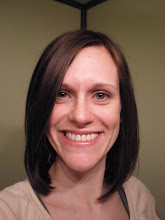In FieldWorking:Reading and Writing Research, 3rd Ed., authors Bonnie Stone Sunstein and Elizabeth Chiseri-Strater ask writers in the process of drafting to consider three crucial questions as they work toward their final projects. These include: What surprised me? What intrigued me? What disturbed me? As I prepare my final research binder for LJHP, I find it necessary to answer these, even though my final project is not a narrative (as I would have loved to do!).
What surprised me?
The amount of information available on Camp Pokagon for Girls came as a surprise to me. Within one day I unearthed weeks worth of artifacts perfect for the coffee table book Flaim and Jim are designing. As I scrolled through page after page, picture after picture, song after song, I found that many of the former campers had stayed in contact with each other over the three or four decades since their camping experiences on Lake James. Not only that, but they had composed a virtual scrapbook of memorabilia from their camping days that brought Lake James of the 1960s and 1970s alive for me. Even though their were very few stories shared on message boards, photos, maps, Pow Wow newsletters, recipes, and more told a story at the heart of the camping experience. The silliness, the sneeking, the singing--all the types of things I remember from my own camping experiences as a pre-adolescent were spread before me. Looking at a Crayola-crayoned drawing of the campgrounds showed me much more than what a traditional map would have. Though I did look for those "official" types of artifacts in my research, the hand-drawn map showed me where I could have found all the subversive activities of campers and counselors that never would have made it into the bi-annual Pow Wow.
What intrigued me?
What drew me into researching Camp Pokagon in the first place were my own childhood experiences camping on various lakes throughout Michigan. Since my camping experiences were always all-girl experiences, I never got to see camping from the eyes of boys. Sure I had read My Side of the Mountain and other fictional tales of adventuresome boys, but I always wondered what kinds of things boys did at camp. Did they sing songs? Did they have skit nights? What things might they have learned that girls did not?
What disturbed me?
As a full month of researching dwindled away, I became disturbed by the complete lack of information about Camp Pokagon for Boys. Though it had been in existence for at least two decades longer than Camp Pokagon for Girls, Camp Pokagon for Boys did not exist on the internet except in one tangential message board in which a former camper mentioned that the counselors used to ride their bikes down the giant slide after hours on Lake James. Oh yeah, and Google results also turned up this blog. This brings about many more questions. Is there something special about girls camp? What sorts of bonds between boys might have formed? Do bonds still exist? And if so, how do they manifest themselves outside of the Internet? Why didn't former boy campers come together in a virtual social space as the girls did? Where might the artifacts of boys' camping experiences reside? The list goes on.
Friday, May 1, 2009
Subscribe to:
Post Comments (Atom)

I attended Camp Pokagon for Boys in 1959, 1960 and 1961. I was 10, 11, and 12 years old. I enjoyed it, but maybe boys are so backward compared to girls that they don't make contacts that last, at least at those ages. I do have some medals from Camp Pokagon, but never took a camera to camp, so I don't have pictures. I do have the "yearbook" with my picture in it that was used to attract new campers for the next year. I remember Lakie, Phil, and our own camp manager, Wally. I can be reached at robertoxley278@gmail.com. Posted 6-13-2010
ReplyDelete